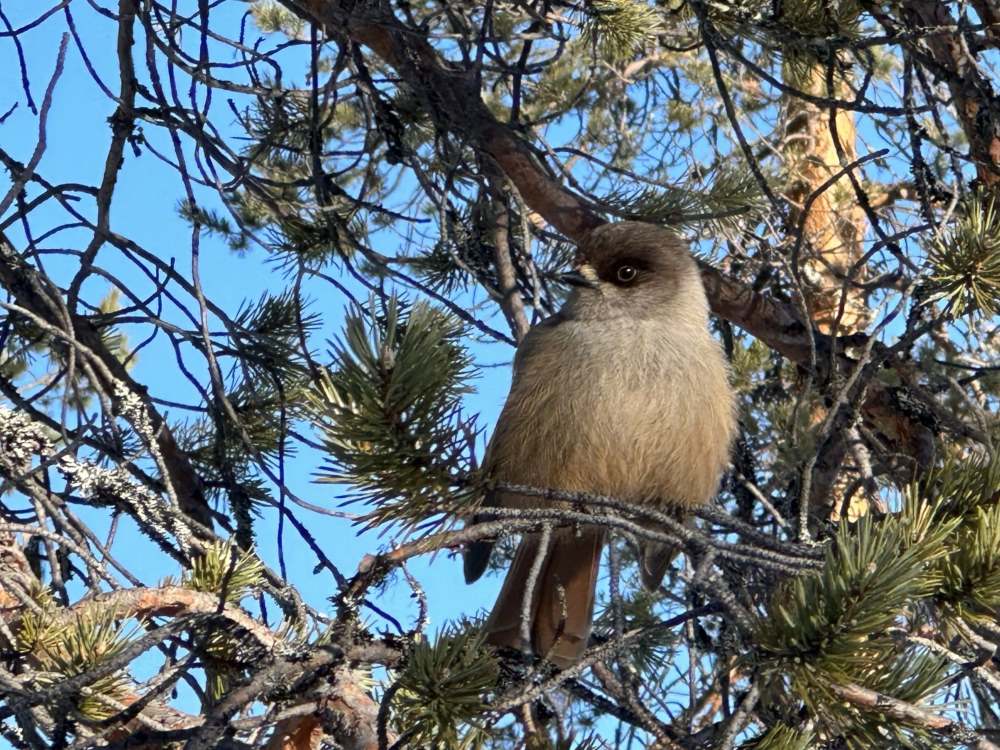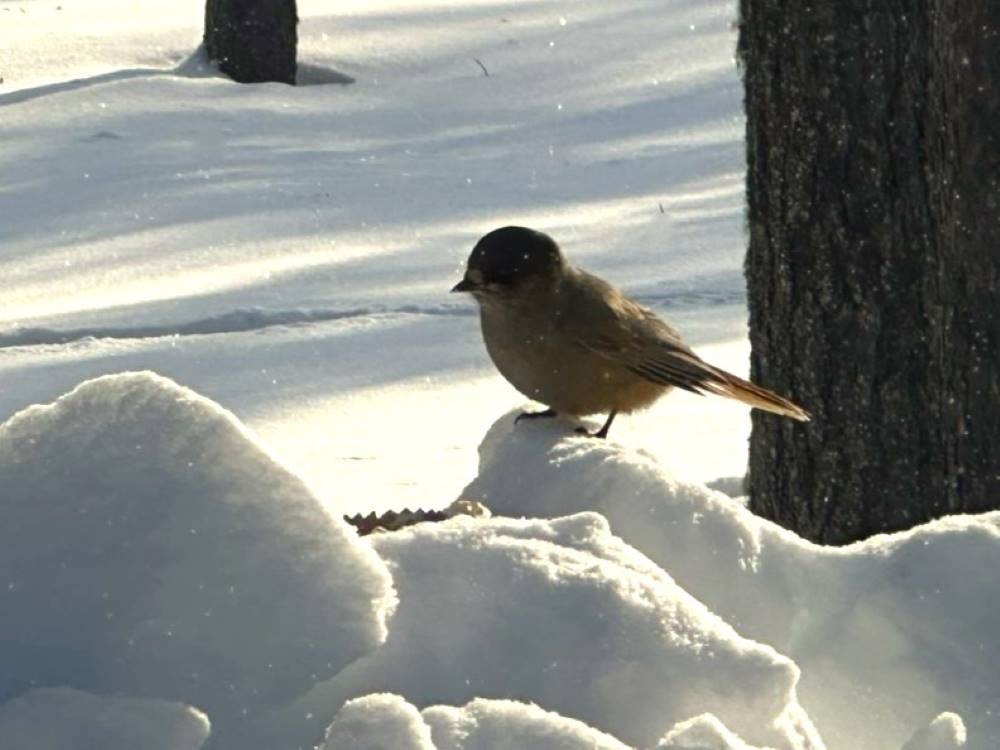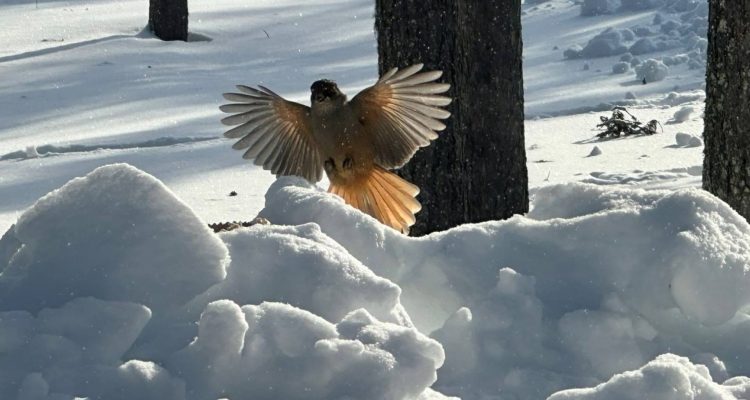The Siberian jay, known as kuukkeli in Finnish, is a bird of the wilderness that is associated with many stories and beliefs. Many nature enthusiasts or outdoor adventurers know it as a fearless and friendly bird they have perhaps encountered in Lapland by a campfire or cottage yard. What some might not know is, that the Siberian jay is actually one of our most declining forest birds. In Lapland, the species is still thriving and even common, but in the south, Siberian jays are decreasing, and the species’ habitat has shrunk significantly. Let’s take a closer look at this beautiful bird, its habitat, and some of the folk tales that it is connected to.
The Siberian jay, Perisoreus infaustus, is a crow family member with a long tail, dark brownish plumage, and a size comparable to a large thrush. It is predominantly grayish-brown, featuring a darker brown cap and vibrant rust-colored markings on the rump, tail, and wings. See NatureGate’s detailed description of the bird here.

Habitat and conservation insights in Finland
In Finland, the Siberian jay is listed as near threatened, protected species. According to the Finnish Association for Nature Conservation, the Siberian jay thrives best in the lichen-covered spruce forests of Northern Ostrobothnia and Forest Lapland. In Southern Finland, its presence is limited to specific areas. In the past, the Siberian jay inhabited the entire southern part of Finland. The Siberian jay is a clear indicator species for forest ecosystems, reflecting that the area’s forest structure allows for the preservation of a diverse range of demanding forest species. Environments favored by Siberian jays, especially bogs and richly decayed coniferous forest habitat types, have significantly decreased. Therefore the restoration of bogs and swamps benefits the Siberian jay and other bird species, particularly capercaillie and black grouse, as well as the decreasing rock ptarmigan.
Can you feed the Siberian jays if you encounter them out in the nature?
Yes, you can indeed feed the Siberian jays you encounter in Lapland. These birds enjoy both savory and sweet foods. However, it’s important to be cautious during winter bird feeding and steer clear of excessively salty offerings to maintain the birds’ health and happiness. Fun fact about the Siberian jay: It stores winter supplies from September to November, much like the jay and nutcracker. Caches are created in tree bark crevices or sheltered by lichens. A single individual may have up to 30,000 food stashes!

Whispers of the Siberian jay: Folk beliefs and the forest spirit’s alliance
The Siberian jay was considered among the omens, alongside birds like the raven, magpie, woodpecker, and cuckoo. Consequently, the old folk closely monitored the Siberian jay’s behavior, leading to a variety of beliefs and sayings associated with this bird. The Siberian jay’s reputation is divided: it is both seen as a symbol of good luck and a foreteller of misfortune. In regions where the Siberian jay was common, it was mostly associated with good fortune; in areas where it was scarce, it was often viewed as a sign of bad luck. This duality is apparent in the contrasting beliefs between the northern and southern parts of the country.
The indigenous people of the northern coniferous forest region have commonly believed that the souls of deceased hunters continue their existence in Siberian jays. However, in Lapland, where the Siberian jay is considered a bird of good fortune, it was considered unfortunate to be the one who discovered the bird’s nest, as death awaited that person.
According to a folk tale, the Siberian jay was believed to be in alliance with the forest spirit, and its role was to serve as a scout and mislead hunters and their dogs, ensuring the woodland inhabitants could remain undisturbed. For a woodsman, encountering a Siberian jay was the worst possible omen; it signaled that the forest spirit was vigilant and would not allow successful hunting that time. If the hunter did not immediately return home, something unfortunate might befall him, such as a broken leg.
We tend to think that in the past, people were close to nature. However, even then, humans and the forest were distinct entities: it was crucial for the boundary between them to remain intact and undisturbed. This is what many Finnish folktales and mythology are about, keeping the boundary and respecting the spirits of the nature.
While we modern-day humans seek a connection with nature and aspire to feel as closely linked to it as possible, it is important to remember that our predecessors also valued the distinction between human culture and the natural world. This boundary served a crucial purpose, and we should keep in mind that it is important to remember that balance and respect for nature were integral to maintaining harmony between humanity and the environment.
Are you good at identifying birds?
Out in the Nature Quiz – Winter birds in Finland
Dive into the captivating world of Finland’s winter birds by challenging yourself with our bird quiz! Put your knowledge to the test and learn about the resilient species that brave the cold. Become an amateur ornithologist and explore the enchanting universe of Finnish winter birds – take the quiz now!

